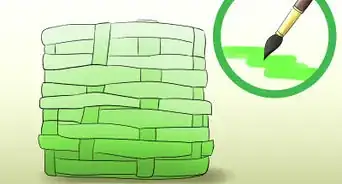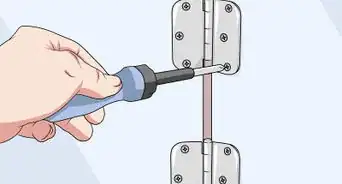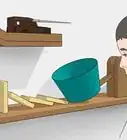This article was co-authored by wikiHow staff writer, Aly Rusciano. Aly Rusciano is a Creative Writer based outside of Nashville, Tennessee. She has over ten years of experience in creative, academic, and professional writing. Aly’s writing has been nationally recognized in the Sigma Tau Delta Rectangle and featured in Blue Marble Review, The Sunshine Review, PopMatters, and Cathartic Literary Magazine. She graduated from The University of Tennessee at Martin with a BA in English, focusing in Creative Writing and minoring in Theatre.
The wikiHow Video Team also followed the article's instructions and verified that they work.
This article has been viewed 7,457 times.
Learn more...
Stress balls are a great way to let out built up frustrations, but they can be costly. Why pay for something that you can make with things you have in your house? Stress balls are easy to make and you won’t need to run to the store for supplies. A DIY sock stress ball will give you a fun craft to work on and some much needed stress relief. Follow these steps to learn how to make your very own stress ball with a sock.
Steps
Things You’ll Need
- Sock
- Scissors
- Rice (preferred)
- Beans (optional)
- Beads (optional)
- Playdough (optional)
- Plastic sandwich bag (optional)
- Rubber band (optional)
- String (optional)
- Needle and thread (optional)
- Marker (optional)
- Ribbon (optional)
References
- ↑ https://psychreel.com/how-to-make-a-stress-ball-without-a-balloon/
- ↑ https://www.backyardcamp.ca/activities/sock-bunny
- ↑ https://www.environment911.org/51-Uses-for-an-Odd-Sock
- ↑ https://www.youtube.com/watch?v=zdGxyRGzVRg
- ↑ https://oneessentialcommunity.com/aromatherapy-stress-balls/
- ↑ https://www.backyardcamp.ca/activities/sock-bunny
- ↑ https://youtu.be/0SwkqmdKX68?t=85
- ↑ https://psychreel.com/how-to-make-a-stress-ball-without-a-balloon/
- ↑ https://www.backyardcamp.ca/activities/sock-bunny

























































Medical Disclaimer
The content of this article is not intended to be a substitute for professional medical advice, examination, diagnosis, or treatment. You should always contact your doctor or other qualified healthcare professional before starting, changing, or stopping any kind of health treatment.
Read More...